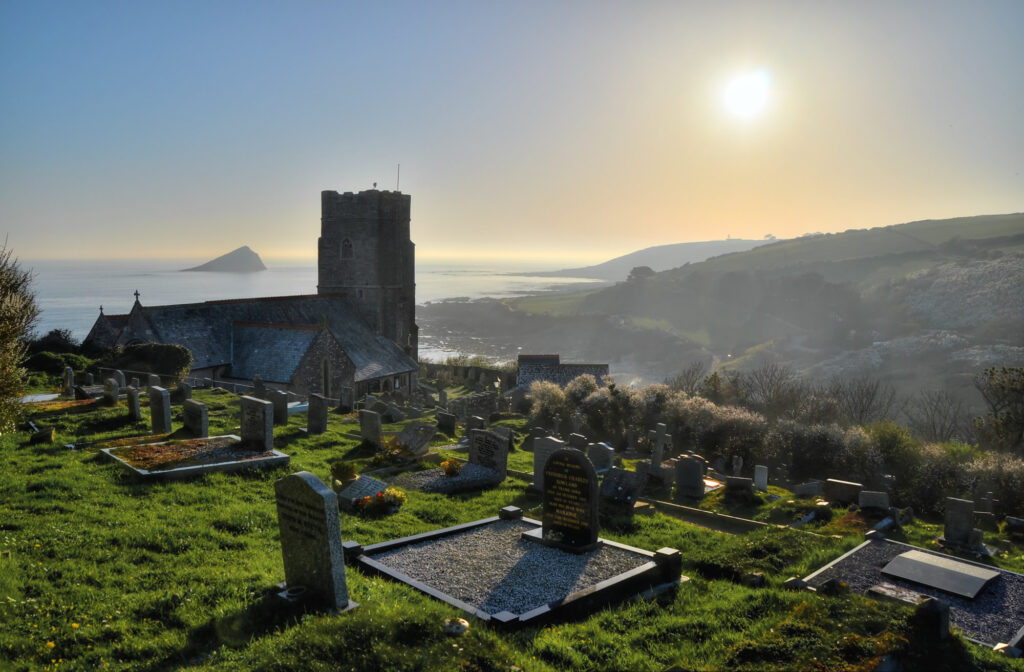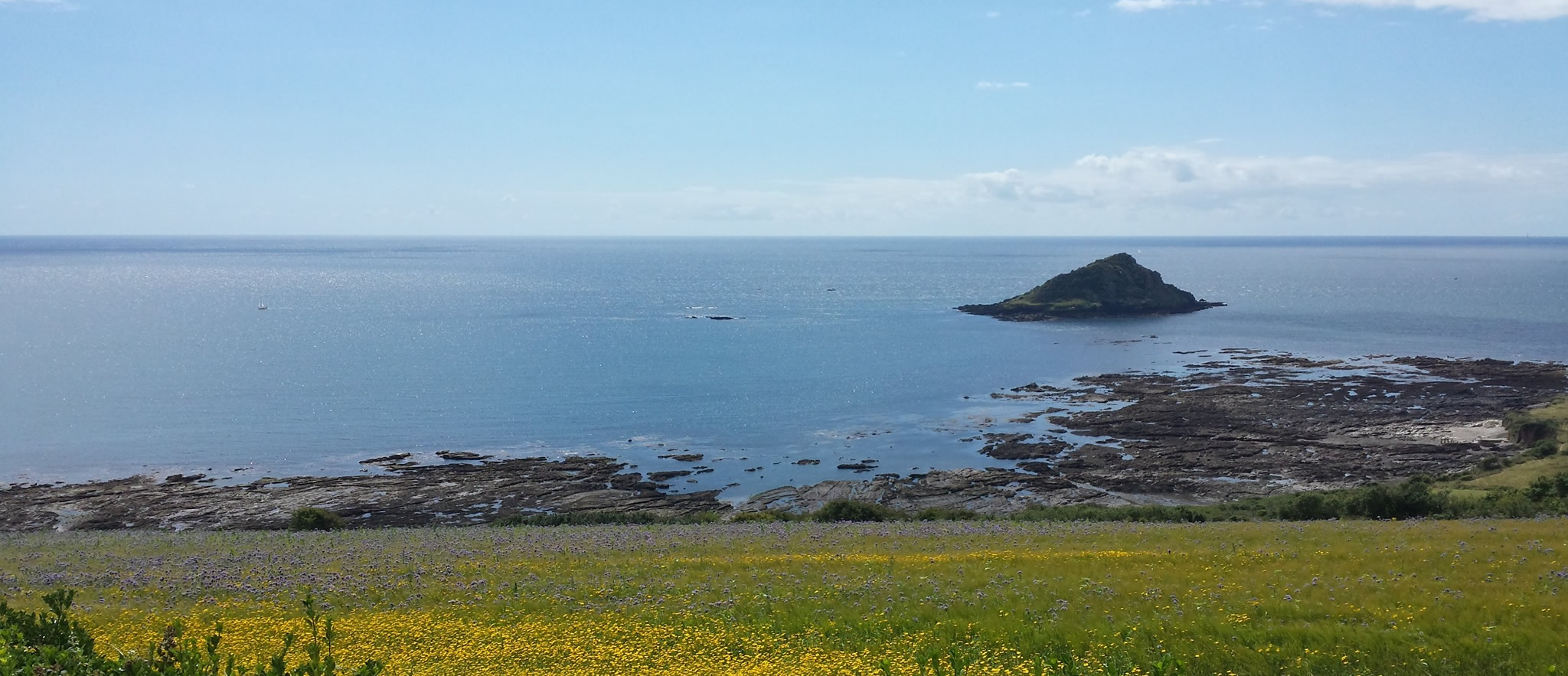St Werburgh
The parish church of St Werbergh has tremendous views out over the Great Mewstone to the English Channel. The present church was built in 1088, on the site of a wooden Saxon church, and was refurbished in the 1880s. The tower dates from the early fifteenth century, and the 1552 Inventory records three bells. Two were added in 1909, and a sixth in 1948, donated in memory of parishioners who died in World War 2. At the front of the church is the St Werburgh Window, dating from 1886.

St Werburgh, the seventh-century Benedictine Abbess of Weedon and Ely and patron saint of Chester, was the daughter of King Wulfhere of Mercia and granddaughter of the King of Kent. Her great-aunt, St Etheldra, founded the Abbey of Ely. Renowned for her humility and her piety, Werburgh also became known as a miracle-worker, after she successfully ordered a flock of wild geese to leave the cornfields where they were causing havoc. When she died there was such squabbling over where she should be buried that her body had to be kept under lock and key. She was finally buried in Staffordshire, where she had been born. Her fame, however, carried on growing, so that her brother had her coffin moved to a more conspicuous site. When he did so, it was discovered that Werburgh’s body was still miraculously intact, nine years later.

